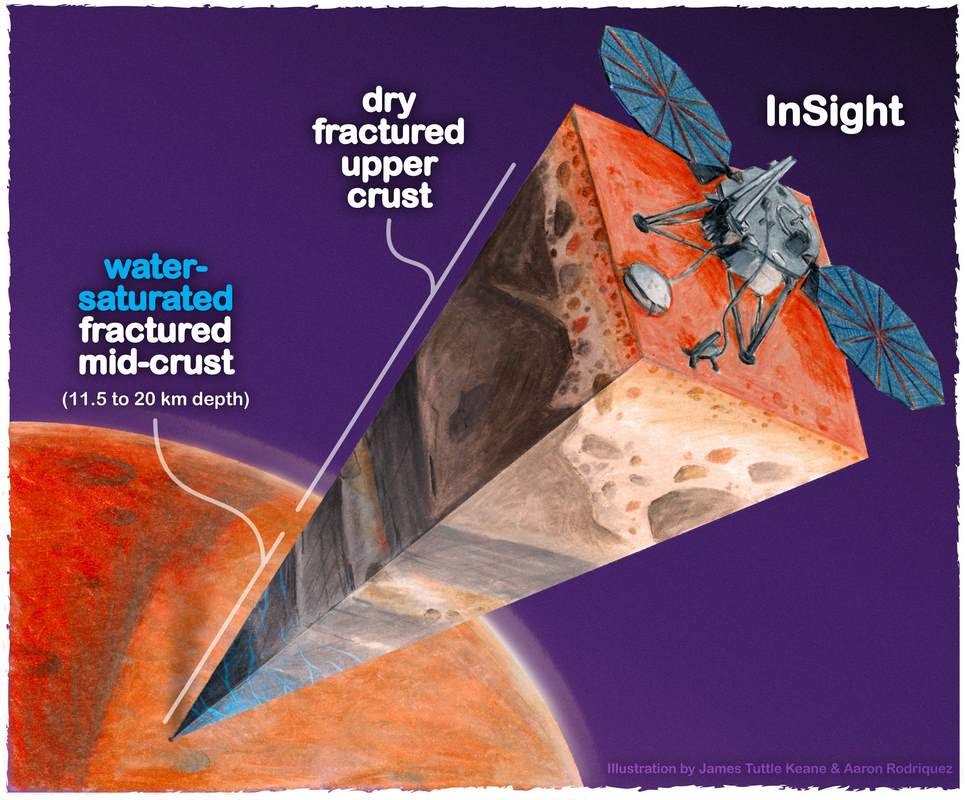
If you want to get excited about scientific advancements from space, you have to accept sometimes that often the most exciting things are the most unactionable.
Take for example a study just released from the University of California—that scientists may have finally found all that water that disappeared off the surface of Mars 3 billion years ago wound up in cracks in the Martian mantle.
The water presents undoubtedly the best chance of settling once and for all whether the once-wet and riverine Martian landscape ever harbored, or still harbors, microbial life.
The only catch is that the water is located 12 miles (20 kilometers) below the surface of the planet, 5 miles deeper than the deepest hole ever drilled into the Earth.
Seismic data from NASA’s Insight lander indicated deep, porous rock filled with enough water to cover the entire surface of the Red Planet with a one-mile-deep ocean.
The discovery is significant as it’s been understood for years that oceans disappeared from the surface of Mars more than 3 billion years ago.
“Understanding the Martian water cycle is critical for understanding the evolution of the climate, surface, and interior,” said Dr. Vashan Wright, of UC San Diego’s Scripps Institution of Oceanography.
Wright and his colleagues employed a mathematical model of rock physics on Mars identical to models used on Earth to map underground aquifers and oil fields. They concluded that the seismic data from Insight is best explained by a deep layer of fractured igneous rock saturated with liquid water.
“Establishing that there is a big reservoir of liquid water provides some window into what the climate was like or could be like,” added study co-author Professor Michael Manga, of UC Berkeley.
THE MARS YOU KNOW: Lava Tubes and Water Frost Found on Mars Offer Double Opportunity in Search for Life
River channels, deltas, and lake deposits, as well as water-altered rock all support the theory that water once flowed on the surface of Mars, but that wet period ended over 3 billion years ago after Mars lost its atmosphere.
Planetary scientists have sent probes and landers to the Red Planet to find out what happened to that water. They say that the water frozen in Mars’ polar ice caps can’t account for it all—as well as when it happened, and whether life exists or used to exist on the planet.
The new findings indicate that much of the water didn’t escape into space but instead filtered down into the crust.
YOU MAY ALSO LIKE: NASA Stunned by Discovery After Mars Rover Breaks Open a Rock
“And… I don’t see why [the underground reservoir] is not a habitable environment. It’s certainly true on Earth—deep, deep mines host life, the bottom of the ocean hosts life.
“We haven’t found any evidence for life on Mars, but at least we have identified a place that should, in principle, be able to sustain life,” he said.
EXTRATERRESTRIAL OCEANS: This Tiny Moon of Saturn Is the Smallest Case of a Subsurface Ocean Ever Found in the Solar System
Insight officially “signed off” on what was then Twitter, after critical power shortages seemed destined to shut the robotic seismographer down. While it may not be continuing to measure “Marsquakes,” the data it already gathered may outlive its noble, metallic soul for years to come.
SHARE This Key Martian Insight From The Insight Lander…



















